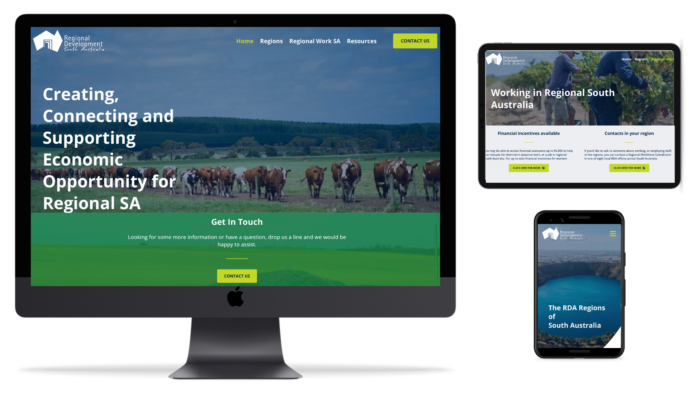
A Statewide Collaboration
Regional Development Australia’s (RDA) eight South Australian branches have collaborated to produce our invigorated new branding and website for Regional Development South Australia (RDSA).
This website demonstrates collaboration across every RDA within the State as they seek to deliver both within and across the eight regions for the best possible outcomes for South Australia.
Executive Chair of RDSA, Rob Kerin, states “This website provides a fresh outlook of our collaboration as a state of our strategic priorities as well as showcasing our public documents such as our Annual Regional Blueprint, Regional Workforce Summary Paper, Annual Summits, and other valuable work we do collectively.
“It is important that our key stakeholders know how truly collaborative our RDA’s are as a state to create, connect and support economic opportunities for regional South Australia”.
The website also features work availability in regions and incentives involved for moving to a region.
About RDSA
Each RDA is a member of RDSA and come together to collaborate on a variety of cross-regional issues and economic development projects that are fundamental to the future and well-being of South Australia.
The Hon Rob Kerin, former Premier and Deputy Premier, and former Minister for Primary Industries, Mines and Energy and Regional Development is the independent Chair of RDSA, appointed by RDSA Members.
The ability to collaborate and advocate as a single state-wide voice through RDSA puts South Australian RDAs in a unique position, as no other state or territory operates under this model. This provides benefits back to regional communities, to local Government in progressing broad development issues and to State and Federal Governments in developing cohesive place and evidence-based policies.
